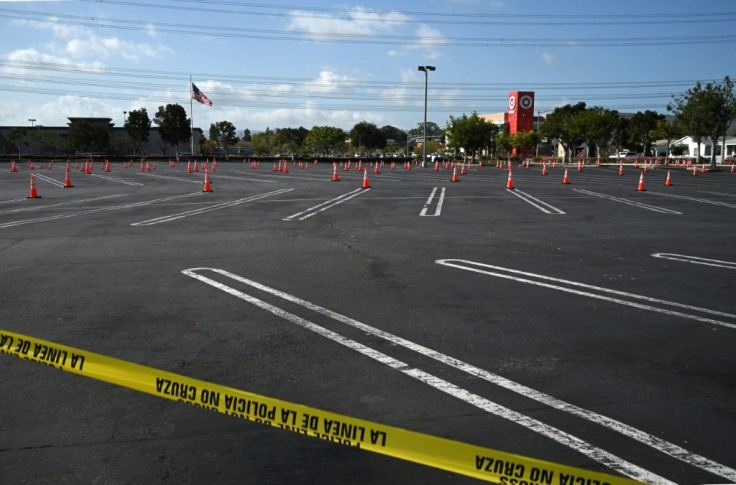Coronavirus Economy: Yelp Says Business Closures Up 200% Amid Pandemic, New York And Chicago Hardest Hit

KEY POINTS
- 48,000 stores, 30,000 restaurants and 24,000 spas and other beauty businesses have closed since March 1
- Consumers are showing a marked increase in interest ragarding guns and ammunition, community agriculture and exercise equipment
- Interest in Chinese food had been falling early in the year but quickly reversed as take-out became the way to go
Business closures across the United States – some permanent – have increased 200% as a result of the coronavirus pandemic, a survey released by Yelp Tuesday indicated. Bars, nightclubs, salons and other beauty businesses are the hardest hit, reflecting a downturn in consumer activity on or around March 11, before many government restrictions were announced.
“The economic changes from the first quarter of 2020 were unlike anything we’ve ever seen. In a period of about 15 days as the nation reacted to the threat of the coronavirus pandemic, the economy transformed as much as it had in Yelp’s prior 15 years of operation, combined,” Yelp data science editor Carl Bialik said in a blog post.
He added: “Consumer activity turned steeply downwards across the board just as businesses began closing nationwide. The exact date and rate of steep decline in searches varied by state, depending in part on what people were instructed by elected officials. … Notably, consumers often were out in front of their leaders: New Yorkers’ search behavior started to reflect the new reality on March 11, two days before Californians’ and 11 days before Gov. Andrew Cuomo ordered his state’s residents to stay home.”
Between March 1 and April 19, more than 175,000 businesses in major metropolitan areas had shut down, with Los Angeles the hardest hit metro area, followed by New York, Chicago, Seattle and San Francisco. The lowest rate of closures were in Philadelphia and Miami. The closures included 48,000 “shopping establishments,” 30,000 restaurants and 24,000 spas and other beauty businesses, the survey indicated.
“While infection rates and risk factors such as public transit and population density differ markedly in metros across the country, the pattern was largely the same everywhere: On or around March 16, closure rates increased by two to four times, and have remained at that new, elevated rate ever since,” Bialik said.
Compared to past disasters, New Yorkers experienced an impact equal to eight Hurricane Sandys, which caused $32 billion in damage, while Houston was hit with the equivalent of four Hurricane Harveys ($125 billion in damages), Miami by four Hurricane Irmas (about $50 billion) and New Orleans by four Hurricane Isaacs ($500 million).
Bars and nightlife were down 81% while salons and other beauty businesses were down 77% and hotels and other travel businesses were down 75%. Restaurants were down 52%.
Before the pandemic shut down U.S. economic life, there were 63,615 bars and nightclubs in the U.S., IBIS World reported, representing a $27 billion industry. The National Restaurant Association counted more than 1 million eateries in the country, employing 15.6 million people before the crisis hit. The restaurant industry had projected $899 billion in sales for 2020.
Consumer interest in businesses is off by 50% since March 10, with a few notable exceptions: Interest in guns and ammunition is up 191%, and community agriculture increased 407%. The Yelp survey indicated a 437% increase in interest in fitness and exercise equipment, a 95% increase in hiking and a 63% increase in Chinese restaurants.
“In January, interest in Chinese restaurants declined from stigma and fear of the virus, then increased … when delivery and takeout reigned,” Bialik said.
Despite surveys indicating attitudes toward the coronavirus differ by political affiliation, Yelp said its data indicate consumers across the political spectrum and regardless of local circumstances responded in much the same way.
© Copyright IBTimes 2025. All rights reserved.






















